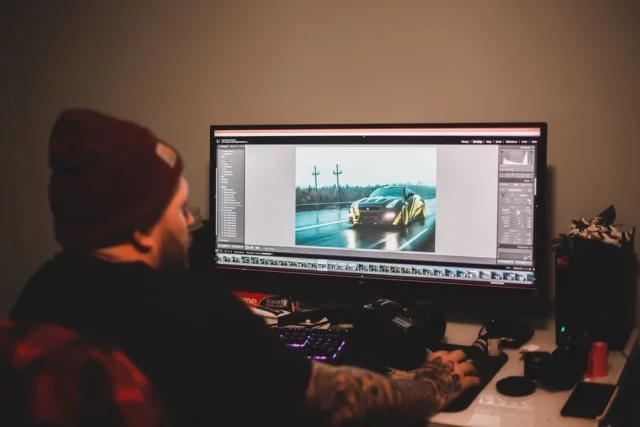Editing video requires technical skills and practice. It’s also better suited to those with artistic sensibility since it’s not purely an IT skill. Video editing is also available to beginners in the field and those that didn’t have a lot of experience in the industry.
There are steps you can take as a beginner to make sure that you’re editing the best you can and that you’re learning on the job. These won’t affect your performance and they’ll help you use the editing exercise you do have as a way to improve your skills.
Make Sure You’re Using The Right Computer
Before you can start editing you need to make sure that you have the right tools at your disposal. The first of these is the computer you’ll be using for editing. It needs to be fast enough to allow you to work smoothly and with ease.
The computer should also have enough memory to easily handle large files that are used in video editing. This will require an initial investment on the part of the editor, but since it’s an essential tool, there’s no way around it.
Using The Best Software Out There
There are many editing software tools out there and as an editor, you should take the proper time to investigate which option is the best for you. Sites such as Trulely.com offer reviews and comparisons that you can use to select a shortlist of editing tools to try out.
The final call on which software to use, needs to be made based on actual tests and day-to-day use. Try the software tool out for a while and see how it works with your workflow and professional needs before deciding to use it in the long run.
This will help you get the right video editor in no time and you’ll produce the best possible content. Thorough research is key in selecting the right software for your specific needs as a beginner.
Take Advantage Of Video Editing Tutorials
Video editing tutorials are available online and you can easily find many of them as a beginner editor. Some of these are free and some of them require a subscription fee that you’ll need to cover. Many such tutorials can help you improve your skills and are a worthy use of your time. You could perhaps learn how to how to remove watermark from a video.
It’s also useful not to stop watching the tutorials. It’s much more prudent to use the tutorials to try the skills out on an actual video. This way you can test what you’ve learned using real-life examples.
Make Sure You Use The 321 Rule
The files that you’re using as an editor are the most important asset you have and it’s important that you make sure they are kept safe and in an organized fashion. Most editors stick to the so-called 321 rule that governs how the files are saved.
The rule states that you need to keep 3 copies of the document you’re working on, that two of them need to be in separate places, and that one needs to be in a separate location. This will keep you covered whatever happens.
Keep The Story In Mind
There are technical aspects of editing and it’s an IT skill in a way. But, it’s also much more than that. It’s also an artistic process and one that is there to facilitate storytelling and filmmaking. That’s what should be on your mind most of all when editing.
The purpose of your work as an editor is to tell a story and to convey an aesthetic. It’s therefore a continuation of other filmmaking efforts such as scriptwriting and direction. Try to think of your work as a collaboration with these artists and fit your editing work into a larger goal.
Set Up A Workflow
There’s no one way to set up an efficient workflow as an editor, but it’s important that you do have one and that it’s carefully designed. This will allow you to work faster, and with consistent output and creativity, as much as it’s possible to do so.
A big part of this is to make sure that your files are organized and that you can reuse them over and over again, as you return to the same video. It’s also useful to have external hard drivers to make sure you’re protected in case something goes wrong.
Make Use Of Keyboard Shortcuts
This may seem like a silly thing since it only saves a couple of seconds of your time, but when you repeat the same task and the same mouse motion thousands of times, those seconds tend to add up. By using keyboard shortcuts for the most common tasks you can save time and work more efficiently.
There are also editing keyboards that consist only of the keys that are most commonly used in these shortcuts. This may be a useful investment if you plan to edit a lot and time is of the essence.
Learn The Commonly Used Terms
A few terms that may confuse a novice editor may pop up a lot when discussing editing tasks. It’s a good idea to learn and master these first since they are the basis of editing and they allow you to communicate with the clients and customers with ease and clarity.
Jump cuts – it’s a cut used to remove the boring parts of the take and keep the visual interest
J Cut- Audio is faster than video
L Cut – Video is going faster than audio
Cutting on Action – Cutting when the subject is in motion
Cutaway – a transitional scene
Can A Beginner Edit Videos?
A beginner without the proper experience in the field can edit videos and even make a living out of it, but there are limits as to how good the final product will be. Experience and trial and error are an important part of developing this skill set and it’s easy to figure out who the novice is.
As long as you’re aware of your limitations and are trying to improve your skills – a beginner can become a good editor. The key is to have the right tools at your disposal and to apply yourself when creating a system and a workflow.














